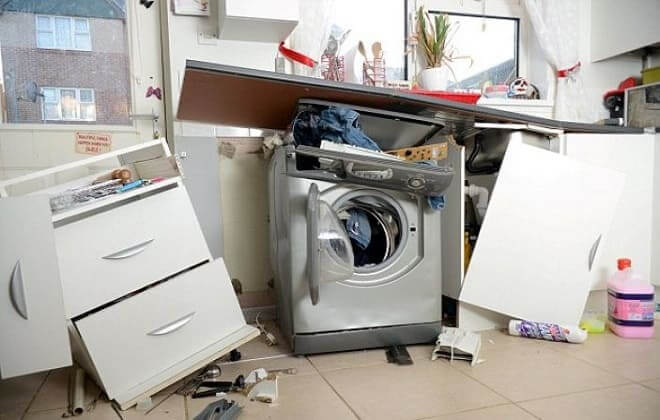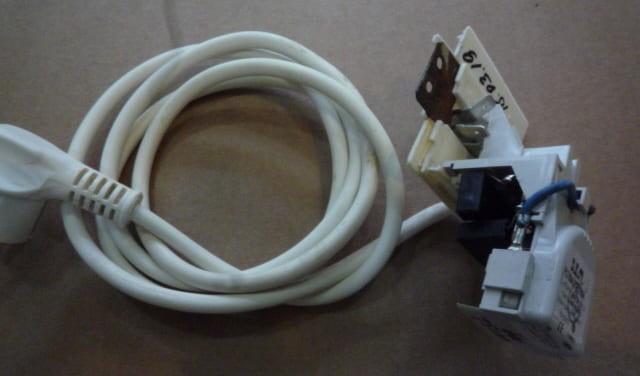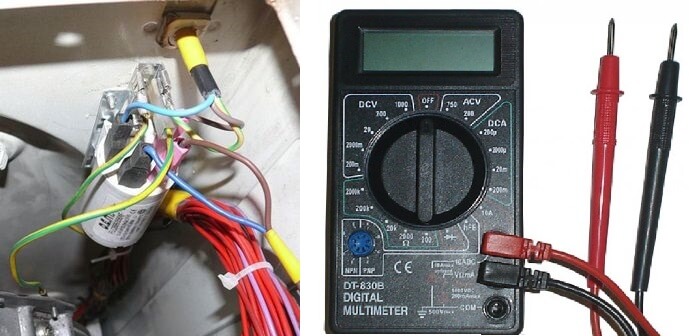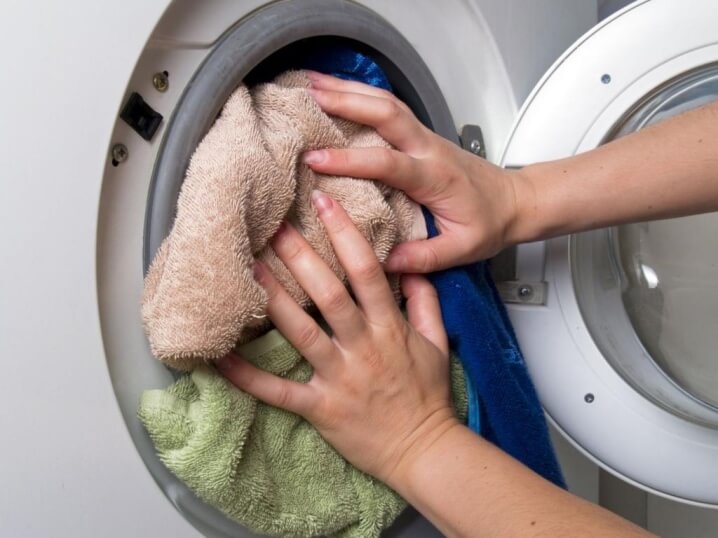If you notice that the automatic washing machine (CMA) has begun to knock, this is a reason to turn it off and take it to the service. A knock is a kind of signal to the user that maintenance is necessary or the equipment will not last long. And what exactly it means, you can find out from this article.

Wrong installation of the washing machine
This is the most common problem and usually shows up immediately after installation. If the washing machine knocks during washing, maybe it hits the walls or floor? To do this, take a level and put it on the lid. If it is not level, you need to adjust the position. You can move to a more even place or put something under the legs.

In some models, the legs can be adjusted in height. If your machine has such a function, use it.
Do not place the AGR close to a wall or furniture. Small wiggles are sure to cause knocking and other noises.
Entry of a foreign object
Another common answer to the question: “Why is the washing machine knocking?”. Small objects (a bone from a bra, buttons from a shirt, coins, etc.) fall outside the drum and a trifle hits it.
Often debris collects in the cuff.It will not be difficult to get it, just move the rubber gasket. Sometimes foreign bodies get into the gap between the drum and the body. In this case, disassembly of the case is indispensable.

Shock absorber failure
The task of the shock absorber is to dampen the vibrations that are formed during the operation of the drum. In a conventional washing machine, there are 2 shock absorbers that are attached to the top of the body.

When the drum rotates, they balance the vibration or it does not reach the body. When it breaks, the vibrations go directly to the body or to other parts of the machine, which creates this sound.
The symptoms of a broken shock absorber are as follows:
- Drum slip. In normal condition, it should line up with the hole on the body. If the shock absorber system breaks down, it drops lower.
- Linen is not centered. If you notice that the washing machine is making a lot of noise, look at the rotation of the clothes. With a working shock absorber, it should move around an invisible axis in the center.

In addition to the shock absorber itself, its mount may break. This rarely happens, but in the event of a breakdown, it is enough to buy it separately, without a complete replacement. Also, the fastening bolt is often loosened, which needs to be tightened tighter. This can be done independently.
Counterweight
If the drum of the washing machine rattles and knocks during operation, there may be a problem in the counterweight, the people call it a "brick". The washing cylinder itself is very light, so it is made heavier. It is fixed on bolts and nuts, which can become loose from constant vibrations.

If the drum knocks strongly during the spin cycle, do a diagnostic disassembly:
- First unscrew the rear bolts of the top cover.
- Remove the top cover to expose the counterweights. It can be 1, but it can also be 2.
- Now shake them separately with your hands. If you notice movement and knocking, then it needs to be tightened.
- Take the knob with the head and carefully turn the nut. You can not pinch, otherwise the brick will crack.
If you notice a knock in the washing machine during the spin cycle, this is the first thing to do.If this is not detected in time, then the counterweight will crack and fall apart. The drum, in principle, is unable to center itself without a brick, so it will begin to beat against the body.
Bearing wear
Have you noticed that the drum in the washing machine knocks not only during the spin cycle, but also during normal washing? Possibly the bearing is the cause.

They are subject to natural wear, as small debris, calcite, etc. get into them. This is especially true for families with children, as they wash more often.
For diagnostics, you do not need to disassemble the case. Turn the drum sharply and listen. If squeaks and beats are heard, then it's time to replace the bearing. Also, its wear can manifest itself in the form of a rattle.

You can’t do repairs on your own - you will have to call the master, since the bearing is removed with pliers and pressed under pressure.

Mains filter failure
It happens that the drum of the washing machine knocks if it is slightly shaken. This indicates that the mains filter has broken off and hits the case during washing.

The surge protector is responsible for damping electrical impulses and is fixed on the case. Often the mounting platform does not withstand vibrations and cracks. The network filter is in limbo. The problem is typical for all machines, even premium ones.

It is enough to buy new fasteners (for example, in a retail online spare parts store) and put the filter in its place.
Soldering is required to install it.If you do not understand anything in electrics, it is better to give the work to the master, the repair will be inexpensive.

Spring breakage
In fact, these are the same shock absorbers, but located on the opposite side. They are necessary to stabilize the drum in the housing.

It is difficult to diagnose their failure on their own, since the symptoms are the same as with a malfunction of the depreciation system. To verify the problem, you need to disassemble the case and look.
Do not replace the springs yourself - an incorrect setting will lead to imbalance and “jumping” of the drum.

Uneven distribution of things
So, the last possible malfunction, if the washing machine makes a lot of noise during the spin cycle, is the wrong arrangement of things. It is typical for older models, where the engine has already lost part of the resource and is not able to fully straighten clothes during washing.

The malfunction is solved tritely: bookmarks are made smaller and straighten the clothes manually. You can not throw it with clods, as they stray into an even larger lump. In addition to the fact that the washing machine knocks during the spin cycle, the clothes will not be washed.

